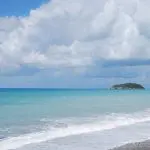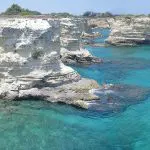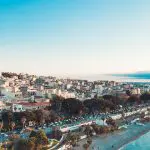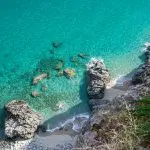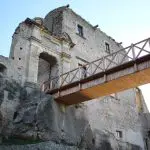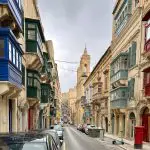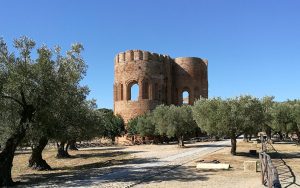
As you travel along the SS 106 from Catanzaro to Soverato, you can’t help but be drawn to the 12th Century Byzantine Basilica of Santa Maria in Roccelletta. This important medieval monument is perfectly perched amongst the surrounding olive groves dating back centuries and in the distance, you can make out the Gulf of Squillace.
As you pass through the front gates, you step back in time to ancient “Skylletium”, which according to the local legend may have been founded by Ulysses when he passed through Calabria after the Trojan War.
Later, the Romans conquered the village and left their mark by covering the streets, forums, and buildings with their own architecture and renaming it Scolacium.
The land, which upon its discovery was declared a landmark, was in its most modern years, the property of the Massa family who harvested the ancient olive groves and produced olive oil.

As a matter of fact, you can visit the milling facilities and see the large stone mills that were used to crush the olives so that they could be turned into a Calabrian cuisine staple and what many Italians would call “liquid gold” aka Olive oil.
The Archaeological Park of Scolacium
Basilica of Santa Maria
This incredible piece of architecture which displays both Greek and Roman characteristics is the first monument that can be seen when entering the park. It is considered one of the largest built by the Normans between the 11th and 12th century on the remains of the Roman city of Scolacium. The church showcases hints of Arab and Byzantine influences mixed with its Romanesque style.

This impressive structure was damaged after a terrible earthquake in 1783, but its perimeter walls, part of the apse and the western facing façade are still intact, the coloring of this building jumps out at you against the flat landscape that surrounds it.
The Roman Ruins
Immersed in the olive grove that had essentially hidden this treasure for years, you can wander and admire the ancient Roman site, in particular, the Roman Forum, Theatre, and Amphitheatre. The Theatre, which once seated 3000 people, was cleverly built on a hilly slope.

Also, on the site is a museum, which houses many of the artifacts that have been excavated. Here you can find everything from ancient tools and pottery to intricate marble statues.

This one, covered in scratch marks along its front side, is believed to have been found by farmers. Where did the scratch marks come from? Some say the farmers’ tools while others say it was wild boars digging for food.
There is also a giant bronze arm, looking at it, you can only begin to imagine the size of the statue it was part of while wondering where the rest of it ended up!
There is so much history in Calabria and a visit to this park will leave you in complete awe. Walking along the grounds it’s remarkable to think that below your feet lies an ancient city that is still waiting to be further uncovered.


